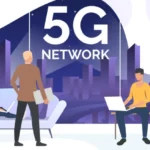The Impact of Virtual Tour Technology on Real Estate: Enhancing Property Showcasing in the Digital Age

Introduction to Virtual Tours in Real Estate
As the real estate industry evolves, the art of property showcasing has embarked on a digital journey, embracing tools that transcend traditional boundaries. The evolution from printed floor plans to interactive, immersive virtual walkthroughs represents a significant leap toward accommodating modern buyer preferences. The melding of convenience, innovation, and engaging content has led to the wide adoption of 3D virtual tour software, propelling the industry into a new era of property marketing.
The widespread prevalence of technology in every facet of life has nudged industries, including real estate, to innovate aggressively. With an increasing number of transactions beginning online, consumers have grown accustomed to digital solutions that offer instant access and tangible insights into their prospective investments.
As a result, real estate professionals are turning to virtual tour technology to meet and exceed these expectations, harnessing its power to captivate a tech-savvy audience. This initiative aligns with progressive marketing strategies and positions listings advantageously in a bustling digital marketplace.
Examining the current landscape reveals a striking change in how properties are presented and experienced. An interactive, well-crafted virtual tour can transport potential buyers into homes and commercial spaces despite geographical distances. In today’s fast-paced world, this luxury of convenience has become a pivotal selling point.
Key Takeaways:
- Virtual tours offer an interactive, time-saving alternative to traditional real estate showings, providing an immersive experience for potential buyers.
- 3D virtual tour software has revolutionized property marketing by emphasizing accessibility, convenience, and a broadened seller audience reach.
- Emerging technologies and consumer behaviors dictate a bright future for virtual tours within the real estate industry.
What Are Virtual Tours and How Do They Work?
Venturing into the realm of virtual tours entails understanding how technology can craft experiences that are both informative and visually captivating. At the core of these virtual experiences is a synergy of photography, software, and user-friendly interfaces that merge to form a dynamic representation of the actual space.
High-definition, panoramic images are meticulously woven together to create a cohesive, navigable environment, inviting users to explore with the mere click or swipe of a finger.
The technology behind virtual tours is robust yet intuitively simple for the end-user. Sophisticated cameras capture wide-angle views, and specialized software stitches these images to form continuous, 360-degree scenes.
Interactivity is a cornerstone feature, allowing viewers to interact with the space in real-time, zoom in on details, and perceive depth and dimensionality that flat images can’t convey. This opens up many possibilities for illustrating a property’s potential and, when executed skillfully, can emerge as a key differentiator in the real estate market.
Benefits of Virtual Tours for Buyers and Sellers
The advent of virtual tour technology has revolutionized the way real estate transactions transpire. For buyers, the convenience is unparalleled. Imagining oneself in a future home or investment property once required physical presence, but now, virtual tours provide immersive pre-visitation experiences accessible from any internet-connected device.
This digital innovation offers a perpetual open house that respects the buyer’s timetable and preferences—no scheduling, travel, or pressure.
For sellers, the narrative is equally compelling. Virtual tours are more than just a modern convenience; they are a strategic advantage. A well-produced virtual tour is a powerful marketing tool that can captivate a broader spectrum of buyers, including remote investors or time-constrained professionals.
It increases the property’s visibility and makes an indelible first impression. The result? Properties often command higher interest, more competitive offers, and more practical sales. Additionally, real estate professionals benefit from a streamlined process, saving considerable time typically spent coordinating and conducting in-person showings.
Virtual Tours Versus Traditional Property Showings
While traditional showings will always hold their value for final buying decisions, virtual tours offer a compelling initial alternative. They provide an efficient first step in home-buying, allowing potential buyers to sift through options and pinpoint properties that truly resonate with their needs.
From a seller’s perspective, virtual tours help pre-qualify buyers, ensuring that only those with genuine interest and intent pursue in-person visits. This optimizes the seller’s time and can quicken the sales cycle significantly.
A study into buyer preferences underscores the shifting paradigm; many buyers now favor virtual over physical property tours during the initial stages of their search.
Advanced 3D virtual tour software facilitates this preference by delivering high-quality, interactive tours that are a close second to the real thing. Real estate professionals align with the desire for convenience and speed in the modern marketplace by providing potential buyers a comprehensive look at a property online.
How Virtual Tours Influence Buyer Decision-Making
Engagement is a key player on the buyer’s journey, significantly impacting decision-making. A passive viewer is less likely to move forward with a purchase than one actively involved and inspired by what they have witnessed.
Virtual tours tap into this psychological aspect by offering an immersive experience that can foster a strong sense of ownership. Buyers can virtually navigate the spaces, discovering details and visualizing their lives unfolding within the walls, thus forming a connection to the property well before a physical visit.
Moreover, with cutting-edge virtual tour technology, real estate professionals can offer a storyteller’s touch to the viewing experience. Integrating narrative elements can make the digital tour a visual walkthrough and a journey that resonates with emotions and aspirations. The impact on a buyer’s inclination to pursue a property can be profound, as they become invested in a narrative where they are the protagonists in a future home.
Integrating Virtual Tours into Real Estate Marketing Strategies
Integrating virtual tours into real estate listings is not a mere addition but a fundamental component of a modern, effective marketing strategy. Ensuring the availability and prominence of these tours in online listings amplifies their effectiveness.
Virtual tours can significantly enhance a property’s online footprint with strategic placement on social media platforms and a well-thought-out search engine optimization (SEO) strategy. This translates to better visibility and, potentially, a faster sale at a desirable price point.
Leveraging virtual tours in marketing campaigns demonstrates a savvy understanding of today’s digital environment, where visual content reigns supreme. Real estate professionals who skillfully utilize these tools amplify interest in their listings and build trust with potential buyers by providing transparent, accessible views of the properties they represent.
With the digital transformation of the real estate sector well underway, embracing these innovations is no longer just advantageous—it’s essential.
Creating a Compelling Virtual Tour
A mesmerizing virtual tour requires a thoughtful approach that melds technology with the art of presentation. The pre-production phase is critical; it encompasses staging the property to showcase its best features, ensuring optimal lighting, and planning the tour’s flow to highlight key selling points.
Choosing the right equipment and software is a crucial decision, as the quality of the final product rests upon their capabilities. Clear, high-resolution images are fundamental, as they contribute to a polished and professional representation of the space.
When capturing the property, attention to detail is paramount. Professional photography techniques like tripods and panoramic heads enable smooth transitions between scenes and contribute to the tour’s overall quality.
Adding background music, voiceover narration, and informative text in post-production can enrich the experience, providing context and depth that resonates with viewers. This attention to detail can evoke emotions and persuade potential buyers to take the next step toward ownership.
The Future of Virtual Tours in Real Estate
The technology driving virtual tours is rapidly advancing, with each iteration offering more sophistication and realism. Immersive technologies such as virtual reality (VR) are already making their mark, promising even more captivating experiences that could redefine property viewing.
Augmented reality (AR) offers another exciting dimension, allowing users to envision changes to the space, such as furniture placement and décor alterations. The investments pouring into real estate technology strongly indicate the driving force behind these developments.
Case Studies: Successful Implementations of Virtual Tours
Case studies illuminate the tangible benefits of virtual tours in the real estate domain. Properties with virtual tours tend to receive more online views and, ultimately, more interest than those without. This increased visibility often translates into more significant and faster offers.
For instance, a study of listings with virtual tours showed that they captivated buyers’ attention for minutes longer than traditional listings. Such metrics are valuable indicators of buyer engagement and interest level, supporting the widespread adoption of virtual tour technology across the industry.
Final Thoughts: Embracing the Digital Transformation in Real Estate
Adapting to the digital revolution in real estate is about leveraging the latest technologies and acknowledging the shifting paradigm of consumer expectations. Real estate professionals must look forward, anticipate trends, and integrate digital solutions into their standard practices.
Virtual tours represent only a facet of this transformation, but they showcase the importance of providing value through innovation and customer-centric offerings. However, despite the technological strides, successful real estate professionals maintain a balance, combining the personal touch with digital prowess to deliver a high-tech and high-touch service.

Business Checking Account Options for Modern Entrepreneurs

Why Businesses Require Inspection of an LPG Tank

Cost of Private 5G and Private LTE Networks: What Should Businesses Choose

Accelerating drug discovery through the DEL-ML-CS approach

AI in Marketing Is No Longer a Buzzword — It’s the Strategy

The Future Of Church Fundraising Through ChariHome Smart Donation Kiosks

High-Tech Hospitality: The Digital Future of Metal Seating

The Emotional Vulnerability Index: Measuring What Traditional Phishing Tests Miss








